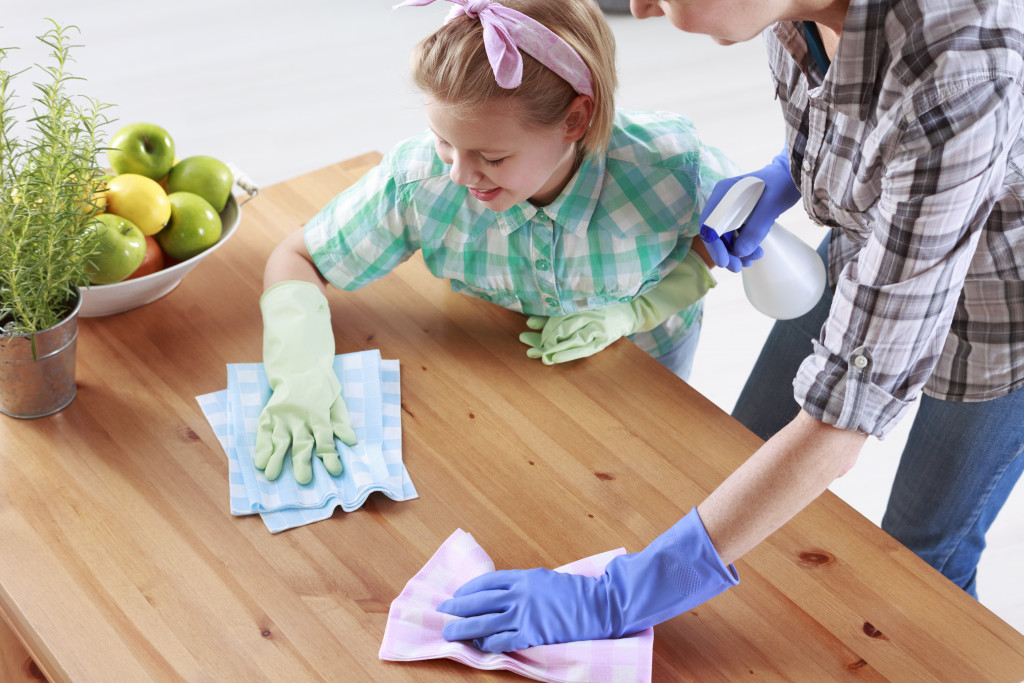- Maintaining a clean environment is essential for kids to develop socially, emotionally, and academically.
- Store dangerous objects out of reach and take out the trash regularly to reduce risks of pests and illnesses.
- Teach kids good hygiene habits to prevent sickness from spreading quickly in the home.
- Maintain home structure by inspecting components regularly and investing in quality materials for proper insulation.
- Ensure security with smoke detectors, carbon monoxide sensors, and emotional support through checking in with family members daily.
Creating a safe home environment is essential for ensuring that kids can grow and develop in a secure and nurturing environment. Studies have shown that children from homes with high levels of safety tend to fare better academically, socially, and emotionally than their peers from unsafe households.
The American Academy of Pediatrics (AAP) reports that the sense of security and belonging from having a safe home is integral to a child’s social, emotional, cognitive, and physical development. They note that when children feel secure in their home environment, they are more likely to develop trusting relationships with adults, explore their surroundings safely, express themselves openly without fear of judgment or reprimand, develop secure attachments with others, and engage more fully in learning activities.
It is a parent’s responsibility to create a safe home for their children. Here are some tactics to make sure your home is as secure and nurturing as possible:
Maintaining Cleanliness

Cleanliness is essential to creating a safe and healthy home for kids. Keeping the environment clean and free of hazards reduces the risk of injuries, promotes healthy behavior, and helps build positive attitudes toward well-being.
By maintaining a clean home, parents can also ensure their children can focus on learning activities without being distracted by mess or clutter. The AAP notes that children who live in a “tidy and organized household [have] higher levels of academic performance than those living in disorganized households.”
Here are some ways to keep your home clean and safe:
Regular Cleaning
Regular cleaning habits are among the best ways to ensure a safe and secure home environment. Schedule specific times throughout the week when you can do a full sweep of your house, taking care to dust surfaces, vacuum carpets, mop floors, and wipe down countertops. This routine will help keep your home free from dirt and debris, which may cause illness or injury.
Store Dangerous Objects Out Of Reach
It is essential to store sharp objects like knives or scissors and dangerous chemicals in places children cannot access them. Investing in child safety locks for cabinets will ensure these items remain safely out of reach even when adults are absent.
Dispose Of Garbage Properly
Garbage can attract bugs like ants or cockroaches if not disposed of properly. Make sure to take out the trash regularly so that it does not pile up in the house; this will reduce the risk of pests entering your home environment and instances of foul odors or mold growth.
Teach Kids Good Habits
Teaching kids good hygiene habits, such as washing hands regularly after contact with germs or hazardous materials, will prevent sickness from spreading quickly around the house and help maintain an overall cleaner environment at home. Additionally, instilling an understanding of why cleaning is essential—such as its effects on health, school performance, etc.—will empower them to learn how to contribute to home maintenance practices.
Keeping Home Structure Intact

The structure of a home is vital for both safety and security. A well-built home protects the interior and exterior from external threats while keeping family members secure. Studies have also shown that children from homes with a higher level of structure tend to be more emotionally stable and have better cognitive development than those living in less structured homes.
Regular landscaping, painting, and repairs should be taken seriously, as they are essential for maintaining a structurally sound home. Inspecting the roof, walls, windows, doors, piping systems, and other components can help catch minor issues before they become more extensive (and more expensive) problems.
Investing in quality building materials like steel or wood is critical when constructing or renovating a home; these materials will be much sturdier and last longer than cheaper alternatives. If you live in a brick home, you can use brick restoration services to fix any damages and keep your home structure intact.
Additionally, opt for materials that will provide adequate insulation against weather conditions like extreme heat or cold temperatures; this will help prevent energy loss which can lead to higher utility bills in the long run.
Ensuring Security
Finally, ensure the physical and mental health of everyone in your home. Paying close attention to signs of illness or distress can help catch problems before they become serious. Taking time out of each day to check in with family members and engage in activities that promote positive well-being is a great way to provide emotional security for kids (and adults) living at home.
Installing a security system is also essential if you live in an area with high crime rates; this will create a layer of protection against potential intruders and other external threats. Security systems are also equipped with features like smoke detectors or carbon monoxide detectors that will alert you in case of fires or gas leaks so that proper action can be taken quickly to avoid injury or loss of life.
Final Thoughts
Creating a safe home environment is essential for supporting family members’ physical, mental, and emotional well-being. Following these tips will help ensure your home is as secure and nurturing as possible so kids can grow up in an environment free from fear or danger. With the right strategies, children can thrive and develop into healthy adults.




